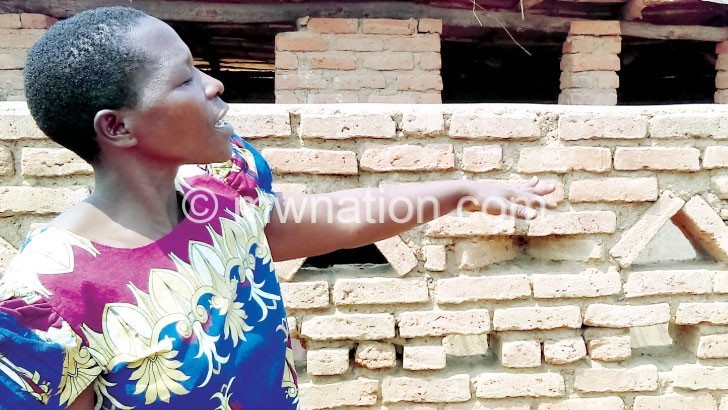Not by maize alone
Elizabeth Mphaza, 56, scarcely harvests enough maize to feed her family until the next harvest.
The mother-of-four, who lives in Mthyoka Village in Lilongwe, recounts how solely relying on maize turned her home into a house of hunger and poverty.
“I used to harvest no more than three bags of maize from my plot. This wasn’t enough for a year,” she explains.
Now she uses new ways of farming to harvest more from her small farmland. She calls it sustainable agriculture.
Nowadays, she uses manure derived from goats, pigs and chicken droppings to boost soil fertility and moisture retention in her crop field. Interestingly, the new techniques, alternatively called conservation agriculture, are working wonders as her maize harvest more than tripled to 11 bags this year.

“The use of manure and laying maize stalks to rot in the crop field has greatly improved soil fertility. Besides, it keeps moisture much longer in times of prolonged dry spells,” she explains.
Mphaza also grows groundnuts, beans, cowpeas and sweet potatoes to cushion her family from harsh effects of weather shocks, pest attacks and climate change. When maize fails, some of the remaining crops do well.
Amid harsh effects of climate change, both government and non-governmental organisations are supporting farmers in the country to adopt agricultural methods that help a farmer yield more from a small piece of land.
Trustees of Agricultural Promotion Programme (Tapp) officer Alleda Chikaonda says climate-smart agriculture makes smallholder farmers resilient to changing climate, especially drought and dry spells.
“We encourage them to grow drought-tolerant crops, such as cassava and sweet potatoes, so that they can harvest something for consumption or for sale if maize does not do well due to erratic rainfall patterns,” she says.
Maize accounts for nearly 60 percent of the country’s food basket. However, the staple is vulnerable to weather shocks, with dry spells often occurring before the crop tassels.
As such, some farmers are cultivating the drought-resistant tubers on bigger pieces of land.
“One of them cultivated one hectare of cassava and earned over K1 million after selling her yield. She used the proceeds to pay school fees for her children and buy livestock. Besides improving nutrition, the farmers’ incomes and livelihoods are also getting better,” says Chikaonda.
Tapp has trained farmers to use new farming practices, including leaving maize stalks in their fields instead of burning them.
Some farmers are keeping livestock, which produce manure, milk, eggs and meat for sale and household use. The earnings are used to buy food and other needs.
The Development Fund of Norway funds some organisations to scale up climate-smart agriculture.
According to country representative Victor Katchika-Jere, nearly 115 000 smallholder farmers have been trained in climate-smart agriculture.
He credits climate-smart agriculture for boosting crop yields, saving the environment and restoring soil health.
“If the environment is in order, every crop grows well. This is why we are focusing on sustainable food production and building resilience to climate change,” he says.
For the past five years, the Development Fund of Norway has also been promoting access to market and finance as well as gender and policy advocacy.
Interestingly, farmers such as Mphaza are producing more yield, meaning farming families have a steady source of food and more money for their needs.
Others sell surplus and use the money to construct decent homes, pay school fees for their children, meet medical bills and acquire other vital assets.
Verina Newa owns goats, chickens and pigs. She grows maize, soybean, groundnuts, beans and sweet potatoes during the rainy season.
Besides, she produces Irish potatoes and other vegetables on her irrigation plot.
Her household no longer lacks food and other basics, she says.
From two pigs in 2015, she has 40. So far, she has sold 25 of them—earning about K1.5 million in the process.
Lilongwe agriculture extension and development coordinator Dalicken Mlima says climate-smart agriculture is helping farmers yield enough crops to feed their families and improve their livelihoods by selling the excess.
He explains: “Many farmers have adapted to the effects of climate change and their livelihoods are improving.”





